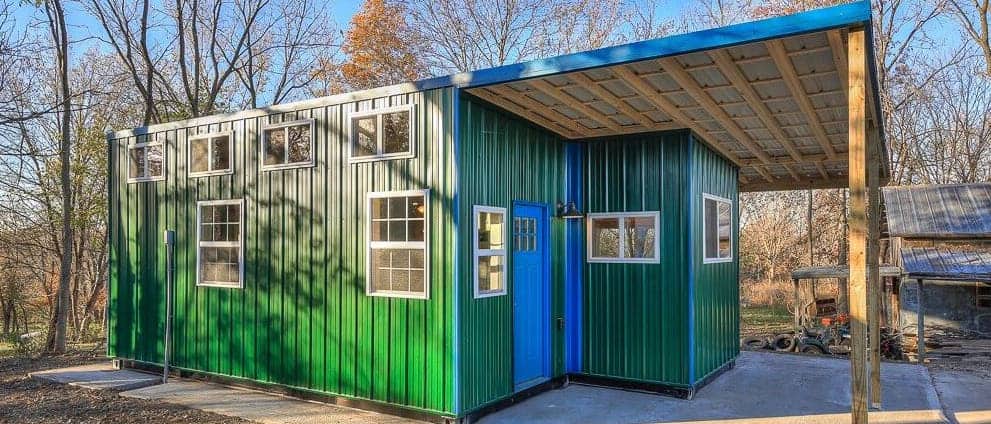In recent years, the tiny home movement has gained remarkable traction among various demographics, and college students are no exception. These compact, efficient living spaces offer an innovative solution to the challenges of finding affordable and comfortable accommodation while pursuing higher education. The trend toward micro-living reflects a broader shift in values, where simplicity, sustainability, and financial freedom take precedence over traditional housing norms.
The appeal of tiny homes to college students is multifaceted. They provide an affordable alternative to costly dorm rooms or apartments, often with the added benefit of customization to suit individual needs. While some students might rely on a paper writing service to do my homework for money, embracing the tiny home lifestyle can be a way to reduce living expenses, allowing them to focus more on their studies and less on financial burdens.
Why Tiny Homes?
Affordability
One of the most compelling reasons for students to choose tiny homes is affordability. As tuition and living expenses climb, tiny homes emerge as an economical choice for housing. Lower utility bills and reduced spending on furnishings and upkeep further contribute to the financial appeal. Additionally, the ability to own a home without incurring massive debt appeals to students seeking financial independence. This economic efficiency often allows students more freedom to allocate funds toward their education and experiences.
Customizable and Personal Space
Tiny homes offer a unique opportunity for personalization. Unlike standard dorm rooms or rental apartments, students can design their space to reflect their personality and needs. This customization can range from space-saving furniture to energy-efficient appliances, creating a cozy and functional living environment. These small dwellings can be tailored to support students’ lifestyles, whether they need quiet study areas or creative spaces for artistic pursuits, making their home a true reflection of their identity.
Tiny Homes and Student Life
Enhanced Focus and Simplicity
Living in a tiny home can significantly reduce distractions, providing a calm and organized environment conducive to studying. The limited space encourages simplicity and decluttering, allowing students to focus more on their school work and less on managing a large living space. This minimalist approach can foster a more disciplined lifestyle, which is essential for academic success. Additionally, tiny homes can offer the solitude and peace needed for intense study sessions or relaxation after a long day of classes.
Sustainability and Eco-Friendliness
Tiny homes are often built with sustainability in mind. Commonly, these dwellings are equipped with eco-friendly features such as solar panels, composting toilets, and systems for collecting rainwater. This aligns with the growing environmental consciousness among students, making tiny homes an appealing choice for those looking to reduce their carbon footprint. These homes often use fewer resources and generate less waste, appealing to students who are passionate about environmental issues and want to live in a way that reflects their values.
Challenges and Solutions
Zoning and Location Challenges
One of the hurdles in adopting tiny home living is finding a suitable location. The regulations regarding zoning and building codes can differ greatly from one area to another. Research and planning are key to finding a spot that allows tiny homes, whether in a rural area, a specialized tiny home community, or even a backyard. Students need to navigate these regulations carefully to find a legally viable and convenient place to park their tiny homes. Staying knowledgeable and taking initiative in this matter can result in discovering an ideal location that meets both educational and residential requirements.
Balancing Social Life
While tiny homes offer many benefits, they can pose challenges for social activities. Creative solutions include outdoor living spaces, community amenities in tiny home parks, or choosing locations near campus to stay connected with peers. Students living in tiny homes can also explore local communal spaces like libraries, cafes, or student centers to socialize and engage with others. This lifestyle encourages more active community involvement, creating opportunities for new friendships and experiences outside the confines of traditional housing.
Conclusion
The tiny home movement presents an intriguing option for college students seeking a unique, cost-effective, and sustainable living solution. While the lifestyle might not be for everyone, those who embark on this journey find it a rewarding experience that aligns well with their academic and personal goals. For students who may be seeking the best paper writing service to manage their academic workload, embracing the tiny home lifestyle can offer a simpler, more focused living environment conducive to studying and personal growth. As more students turn to tiny homes, we may see a continued evolution in how the next generation approaches living and learning.

